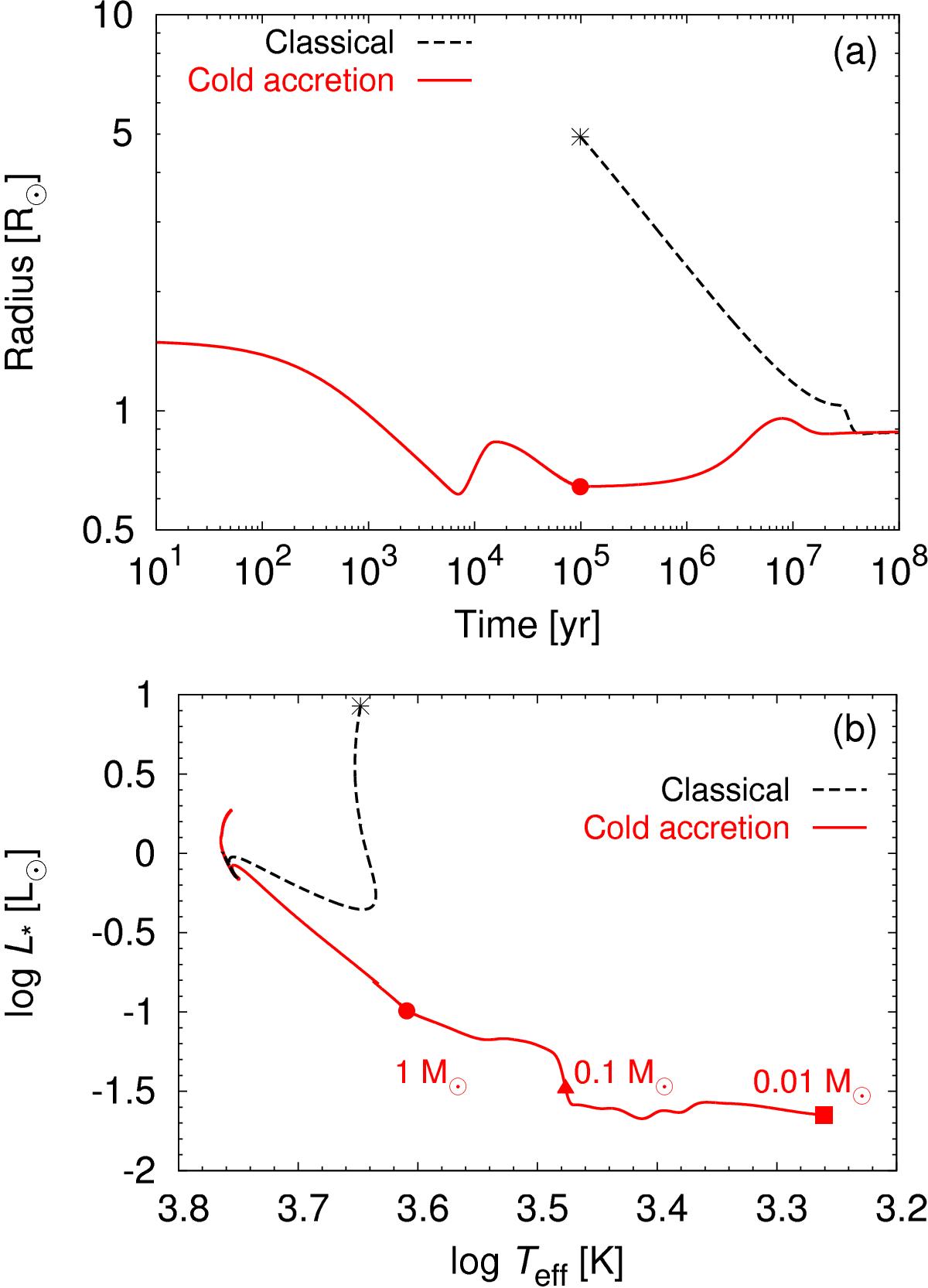Fig. 2

Radius evolution (top panel) and evolutionary tracks in the H-R diagram (bottom) comparing the cold accretion (solid line) with the classical 1 M⊙ evolution (dashed). The filled square indicates the initial location, the triangle indicates the stellar mass at 0.1 M⊙, and the circle indicates the end of accretion. The non-accreting classical evolution, whose initial radius is assumed to be 4.92 R⊙ as shown by the asterisks, starts at 0.99 × 105 yr to compare the evolution. At 105 yr, the radii are about one order of magnitude different. In the classical model the star evolves along the Hayashi and Henyey tracks, whereas in the cold accretion model the evolution is roughly horizontal in the H-R diagram. Although the deuterium burning slightly increases the luminosity where log Teff ≃ 3.5, it is much smaller than the Henyey track of the non-accreting 1 M⊙ star.
Current usage metrics show cumulative count of Article Views (full-text article views including HTML views, PDF and ePub downloads, according to the available data) and Abstracts Views on Vision4Press platform.
Data correspond to usage on the plateform after 2015. The current usage metrics is available 48-96 hours after online publication and is updated daily on week days.
Initial download of the metrics may take a while.




